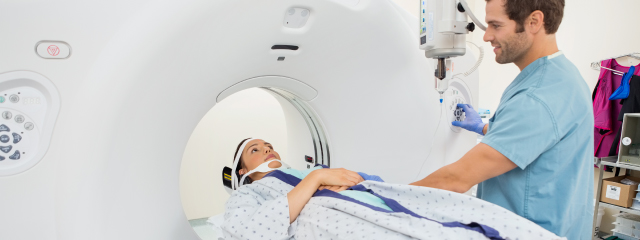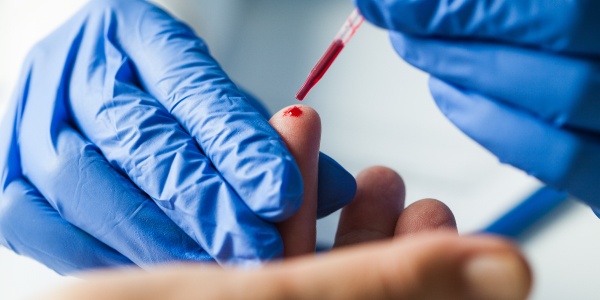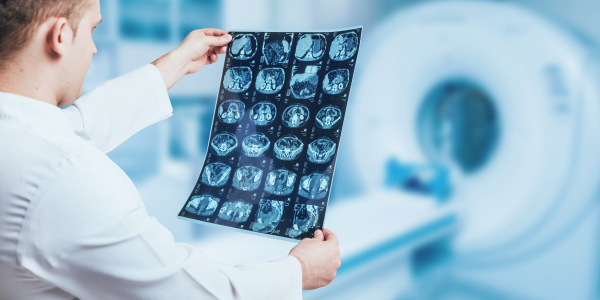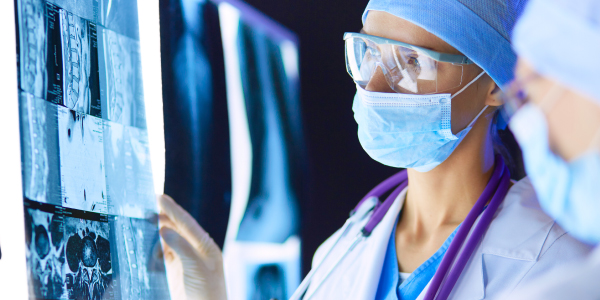
 What Are Diagnostic Tests?
What Are Diagnostic Tests?
Chances are, anytime you’ve gone to the doctor’s office presenting symptoms of an illness or injury, your healthcare provider has requested that you undergo diagnostic testing of some sort. Medical diagnostic tests encompass a wide variety of physical examinations—both invasive and non-invasive—given by medical professionals to confirm the presence or absence of illness/disease in patients. Keep reading to learn more about the importance of diagnostic testing and the most common medical tests ordered by doctors.
Why Is Diagnostic Testing Important?
Accurate and efficient diagnostic procedures are crucial for doctors to create effective treatment plans that allow patients to recover as quickly as possible with the least amount of complications. There are currently 113 essential diagnostic tests, as defined by the World Health Organization (WHO), that doctors hope will help improve diagnostic—and consequently, treatment—outcomes.
For many of us, going to the doctor is usually a sign that something abnormal is happening in our bodies, oftentimes waiting until the symptoms are unbearable. Although you may think that practice is fine for something as seemingly innocuous as the common cold or a sprained ankle, not every illness will clear up on its own, and those that don’t have the potential to be fatal if not treated promptly.
 What is Diagnostic Testing Used For?
What is Diagnostic Testing Used For?
Diagnostic testing, as mentioned above, is generally used to discover the underlying issue that brought a patient to the doctor in the first place. Diagnosis, however, is not the exclusive function of diagnostic testing. Though there are an overwhelming number of medical examinations used to diagnose an even more overwhelming number of ailments, they can, for the most part, be classified as fulfilling the following five roles:
Confirmation/Exclusion
An assessment used to either confirm or exclude a suspected disease
Triage
An initial test that is quick to administer with a low margin of error in regard to false-positive results
Monitoring
A repeated test that allows for assessment of a treatment’s efficacy
Prognosis
An assessment of a treatment’s outcome or the progression of a disease
Screening
A test used to detect the presence of disease in a person presenting as asymptomatic
Now that you’ve got a general idea of the purpose of these various roles that diagnostic tests are used to fulfill, let’s take a look at the specific methods of diagnostic testing most commonly used by doctors.
 What Are Examples of Diagnostic Tests?
What Are Examples of Diagnostic Tests?
Complete Blood Count (CBC)
A CBC is a common type of blood test that analyzes fifteen different blood test readings that provides a general overview of an individual’s health and is often the first test used to determine if a patient has an infection or if other factors are causing their symptoms.
Comprehensive Metabolic Panel (CMP)
A CMP, like a CBC, is a fourteen-part blood analysis that provides information about a patient’s current metabolism—including information about kidney and liver function; electrolyte, protein, and blood glucose levels; and acidity/alkalinity.
X-Ray
X-ray machines use low doses of high-energy radiation waves aimed at a specific body part to record an image that shows variations in tissue density. X-ray is the most commonly known form of diagnostic imaging and is often the first imaging test done to evaluate issues in the arms, legs, chest, and, occasionally, the spine and abdomen.
Computer Tomography (CT)
CT scans are the more advanced and detailed version of x-rays used to produce cross-sectional images of bones, soft tissues, blood vessels, and other internal structures. These machines work by sending narrow x-ray beams through the body and into an x-ray detector directly opposite the x-ray source. CT scans are crucial in diagnosing internal injuries, fractures, and tumor growth that is otherwise asymptomatic.
Magnetic Resonance Imaging (MRI)
An MRI is a highly-advanced imaging procedure that uses magnetic and radio waves to produce highly-detailed images of organs, soft tissues, bones, and other internal structures without the use of radiation. MRI is the preferred method for detecting abnormalities in the brain and spinal cord, especially the presence of tumors in these areas.
Ultrasonography
Ultrasound scanning involves the use of very high-frequency sound waves and a transducer (a probe used to produce and receive the sound waves that bounce off body tissues and create echoes) to project images of internal organs, tissues, and vessels on a computer screen. These scans are helpful in detecting swelling and infection within the body, and outside of diagnostic purposes, ultrasound technology is most widely used in obstetrics to monitor fetal development.
Though this is by no means an exhaustive database of tests given by doctors to aid in the process of diagnosing and treating various ailments, this list includes the most commonly administered diagnostic procedures used in the initial screening process of discovering an ailment’s underlying cause.
At OakBend Medical Group, we know that undergoing a diagnostic procedure can be anxiety-inducing for a variety of reasons, but fear of the procedure itself shouldn’t be one of them. We hope this guide has answered any questions you might have about your upcoming medical diagnostic test and has helped calm any nerves you may be feeling about it.
OakBend Medical Group
We are a community-minded group of physicians who provide services in the heart of Fort Bend County. Our services are provided by excellent physicians whose specialties include Family Practice, Obstetrics and Gynecology, Orthopedics, Sports Medicine, Geriatrics, Cardiology, and Internal Medicine.
For more information on the medical diagnostic tests we provide, or to schedule an appointment, visit our website to find the location nearest you.
If you are experiencing a medical emergency, please call 911 or present to your nearest emergency room for evaluation and treatment.
Leave a reply








Most Commented